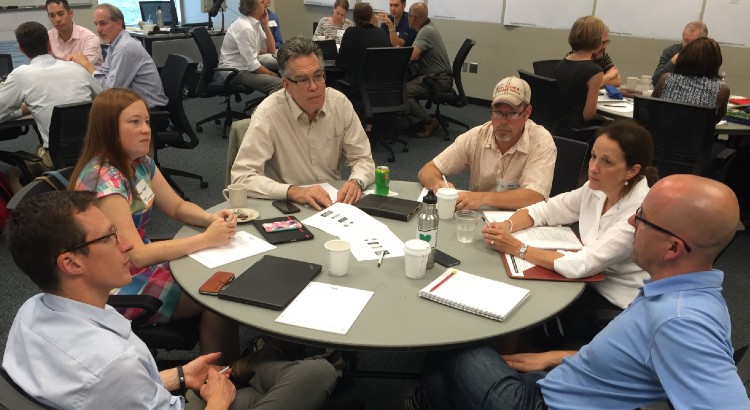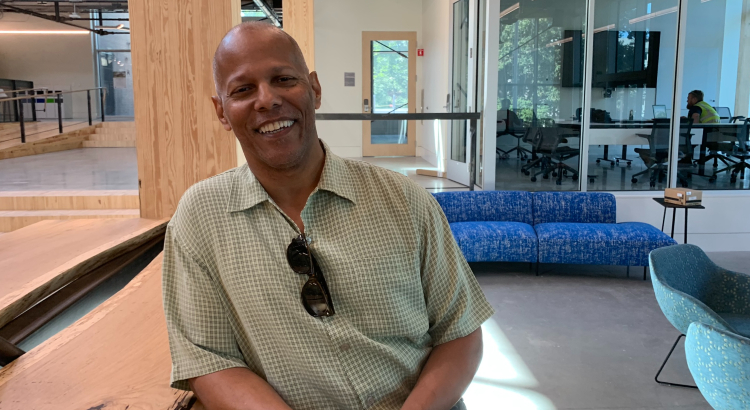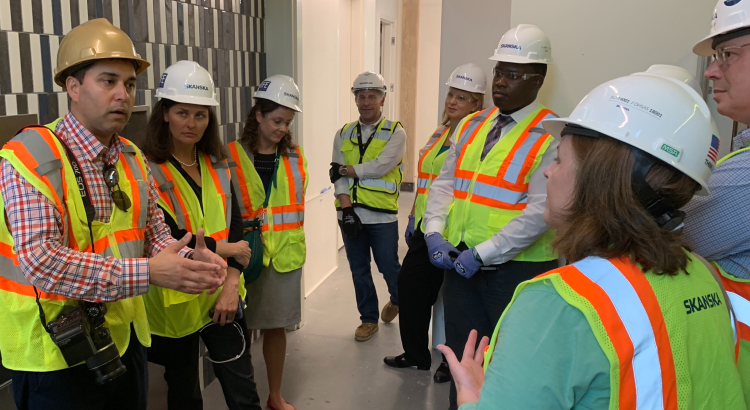After five years of following the Kendeda Building from design through certification, I asked three project leaders a distinct question about the potential impact of Georgia’s Tech’s landmark building.
Dennis Creech
Kendeda fund sustainability adviser

Along with Kendeda Fund founder Diana Blank, you set an ambitious goal — that this building could play a role in transforming design and construction in the Southeast. Has that goal been realized?
“This is a big industry, and it’s like a battleship that turns slowly. So it’s not transformed the way the Southeast designs and builds buildings yet. That is something that urgently needs to happen. But it’s creating some ripples. Now, that things are opening back up, we are getting the attention of some key people.
“One thing that really hit us was the pandemic. The coronavirus was not our friend. So many people are visual learners, especially in this industry. In that sense, our timing turned out to be just horrible — through no fault of our own — because everything shut down just as we were showing so many people the finished project.
“But I’m fielding more calls from people who want to incorporate a lot of these ideas into other projects. I think a lot of the smartest people in the industry — whether builders or architects or tradespeople or engineers or material manufacturers — understand that this is the direction things are going, and they’ll put themselves at a competitive advantage by getting up to speed now.
“And don’t forget that it’s pretty significant that Georgia Tech — which is such an influential institution when it comes to the built environment in this region, and really the world — has taken a lot of the lessons learned to heart. We hope to see them continue to build on that in the way they continue to develop their campus.
“At the end of the day, we proved this could be done in the Southeast, and frankly the performance has been a lot better than I thought it would be. Every day, the Kendeda Building serves as living proof on a campus that’s chock full of students who will be influencers in the future in fields like architecture and energy and construction and materials.”
John J. DuConge
Senior project manager, Georgia Tech Office of Sustainability, Facilities and Safety

Did Georgia Tech change its approach to design and construction as a result of its work on the Kendeda Building? I’m not just thinking about specific practices and policies, but also the overall culture.
“Both, I’d say. On the cultural side, you also have to keep in mind that we had a top-level leadership transition. Georgia Tech already had a strong commitment to sustainable buildings. But the new administration has embraced viewing the Kendeda Building as a model for some of the things we aspire to.
“I don’t think we realized how far we could go. One example was that we didn’t really think about salvage materials. Another was understanding how feasible it is to create net-positive-energy, net-positive-water buildings. …
“Some of the differences aren’t easy to measure. Building and operating the building just gives you a better idea of how a Living Building feels — the operable windows, the way it interacts with the natural world, the way people behave in it. …
“When it comes to practices, the Kendeda Building has been responsible for changing our internal standards. We now have a process to consider salvage materials on all our projects. We’ve just diverted 21,000 pounds of material on a project (the Gilbane Campus Center) where we tore down one building and gutted another. That was directly related to lessons we learned from the Kendeda Building. …
“But overall we’re thinking about all these details in a way we weren’t thinking about them before, and we know we can aim a lot higher. This was a life-changing project for me on a personal level, but it was also a life-changing project for the campus.”
Shan Arora
Kendeda Building director, Georgia Tech

The Kendeda Building achieved its goals for its own impact on the environment. But can one building do much to actually change the trajectory of the way buildings are affecting the environment?
“Can I rephrase your question? Maybe, it should be: ‘Will people allow this building to change our trajectory?’
“As much as we give it the name ‘Living Building,’ it’s still just a building. It’s the people who occupy it — who experience it — who are affected by it. We are ones who are living and breathing, who can actually bring about change.
“People ask, ‘What is the mechanism that allows us to change things?’ My answer is always: ‘You.’
“Will people allow themselves to be inspired and think about the possibilities? If the administration at your university knows that a massive part of the student body and the community really care about where we are heading, they will have to respond to that. If you let corporations and businesses where you will work or where you purchase things know that you will reward them for doing the right thing, they will respond to that. If you let elected officials know, they have to respond to that.
“This building is a tool to help us change that trajectory. It demonstrates that it can be done.
“There’s no technical barrier. People may say, ‘Oh, but it’s going to cost so much.’ Will it? We’ve bought all our electricity for 25 years. Our biowaste does not go into the sewers. And the cost of net positive goes down as the cost of our infrastructure goes up! So there is no technical barrier, and really there isn’t a financial barrier if you take the long view.
“So what’s the barrier? What prevents us from getting more places like this?
“My answer is: I am. You are. We all are. That’s both what’s disconcerting about it and what gives me hope. Yes, that means we’re relying on ourselves; people got us into this mess and now we’re relying on ourselves to get us out of it. But it’s also inspiring because it means that we’re the ones with the power to do that.
“You are the students who can demand that this is a priority for your community. We are the consumers who can purchase products from companies that are better for the environment and people. We are the current and future employees who can expect more from the employers who need us. We are the current and future leaders who can show what the values of companies are. We are the current and future voters; the current and future elected officials.
:So it’s really a question of will. This building can change our trajectory if we allow it to!”

